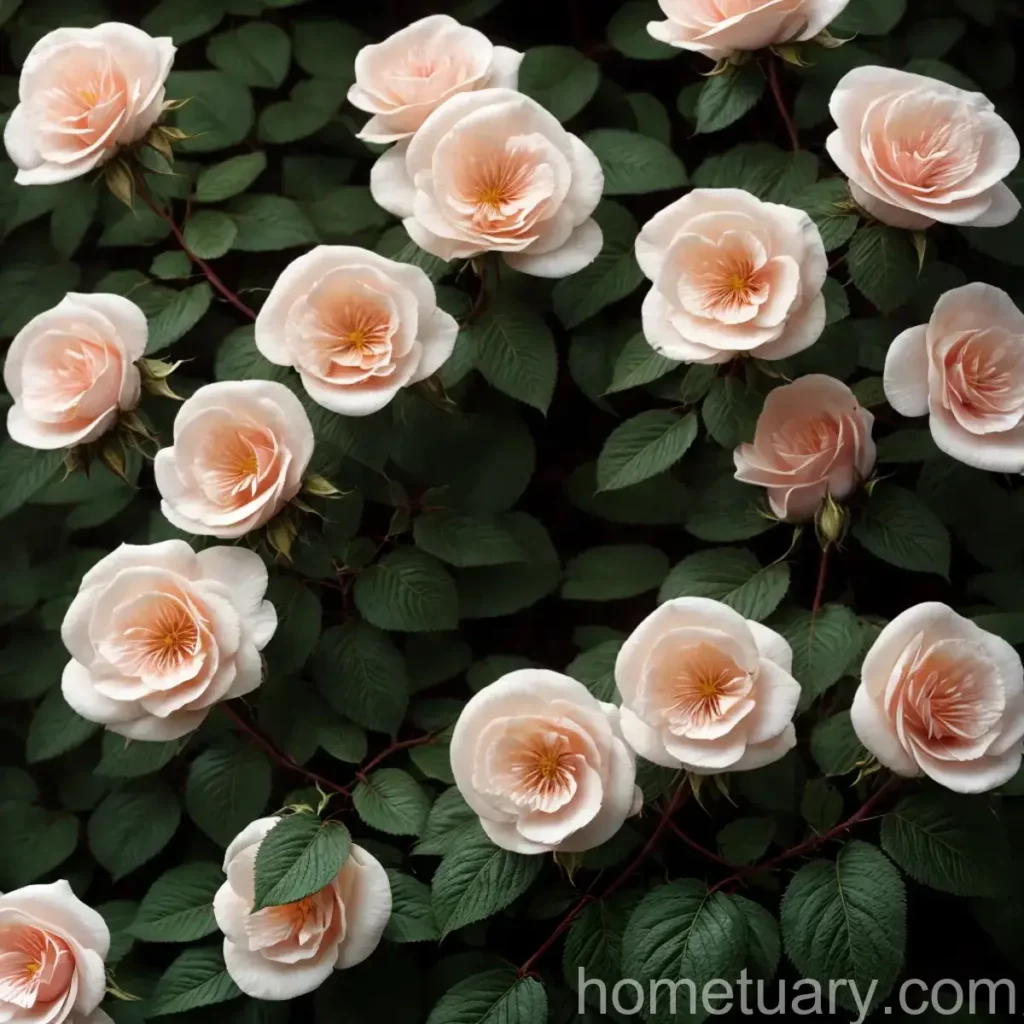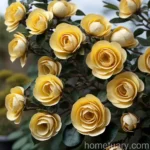Multiflora Rose (Rosa multiflora): A Comprehensive Guide
Introduction
Plants play a crucial role in our ecosystems, contributing to environmental health, food production, and overall well-being. Among the myriad of plant species, the multiflora rose (Rosa multiflora) stands out due to its unique characteristics and diverse uses.
In this comprehensive guide, we will delve into every aspect of the multiflora rose, from its cultural significance and ecological impact to its management, diseases, and pests. By the end of this article, you will have gained a deep understanding of this fascinating plant, its uses, and the best practices for cultivating and maintaining it.
What is Multiflora Rose (Rosa multiflora)?
The multiflora rose (Rosa multiflora), also known as Japanese rose, is a species of rose native to eastern Asia, specifically in Japan, Korea, and eastern China. It was introduced to the United States in the 1860s primarily for use as a rootstock for ornamental roses and erosion control. However, it has since become naturalized across much of the United States and Canada.
The multiflora rose typically grows as a spreading shrub or a climbing plant with arching canes. It is characterized by its clusters of small, fragrant, white flowers and bright red rose hips, which persist into the winter.
Key Takeaways – Multiflora Rose (Rosa multiflora)
Before diving into the specifics of multiflora rose cultivation and management, it’s important to highlight some key takeaways about this plant. Here are some crucial points to remember about the multiflora rose:
- The multiflora rose is a species of rose native to eastern Asia, known for its vigorous growth and widespread distribution in the United States and Canada.
- It is prized for its fragrant, white flowers and bright red rose hips, which provide aesthetic appeal and serve as a food source for wildlife.
- Multiflora rose is a versatile plant with various uses, including ornamental landscaping, wildlife habitat enhancement, and erosion control.
- Despite its beneficial uses, multiflora rose is considered an invasive species in many regions, posing ecological and agricultural threats.
Now that we have a general understanding of the multiflora rose, let’s explore the specific cultural requirements, uses, and management practices associated with this plant.
Cultivation of Multiflora Rose
Cultivating multiflora rose requires careful consideration of its cultural needs, including water, sunlight, fertilizer, soil, and pruning. Understanding these factors is crucial for successfully growing and managing this plant.
Water
- Multiflora rose is known for its adaptability to a wide range of moisture conditions.
- While it can tolerate drought once established, regular watering during dry periods can promote healthier growth and flowering.
Sunlight
- Multiflora rose thrives in full sun to partial shade.
- It is important to provide adequate sunlight for optimal flowering and fruit production.
Fertilizer
- The plant does not have excessive fertilizer requirements and can thrive in moderately fertile soils.
- A balanced, slow-release fertilizer applied in early spring can support healthy growth and blooming.
Soil
- Multiflora rose is adaptable to various soil types, including loam, clay, and sandy soils.
- Well-draining soil is essential to prevent waterlogging and root rot.
Pruning
- Regular pruning is essential to maintain the shape and size of multiflora rose shrubs and to encourage flowering.
- Prune in late winter or early spring before new growth begins.
Uses of Multiflora Rose
The multiflora rose has a wide range of uses, from ecological benefits to ornamental and practical applications. Understanding its diverse uses can help us appreciate the plant’s multifaceted role in various settings.
Ecological Benefits
- Multiflora rose provides valuable wildlife habitat, offering food, shelter, and nesting sites for birds, mammals, and insects.
- The plant’s dense thickets can serve as protective cover for wildlife and contribute to biodiversity conservation.
Landscaping and Erosion Control
- In ornamental landscaping, multiflora rose is valued for its beautiful flowers and decorative rose hips.
- Its rapid growth and spreading habit make it an effective plant for erosion control in areas prone to soil erosion.
Culinary and Medicinal Uses
- The rose hips of multiflora rose are rich in vitamin C and can be used to make jellies, teas, and preserves.
- In traditional medicine, rose hips are valued for their potential health benefits, including immune system support.
Fence and Hedge Planting
- The plant’s thorny canes and dense growth make it suitable for creating living fences and barriers.
- Multiflora rose can serve as a cost-effective and environmentally friendly alternative to traditional fencing materials.
Propagation of Multiflora Rose
Propagation is an important aspect of multiflora rose management, allowing for the controlled expansion and distribution of the plant.
Propagation Methods
- Multiflora rose can be propagated through seeds, stem cuttings, and layering.
- Seeds should be scarified to improve germination, and stem cuttings can be taken from semi-hardwood or hardwood growth.
Container Cultivation
- Multiflora rose can be successfully grown in containers, provided that the containers are large enough to accommodate the plant’s spreading root system.
- Container-grown multiflora rose can be used for ornamental purposes or to create portable living barriers.
Popularity of Multiflora Rose
Despite its invasive nature in many regions, the multiflora rose has been widely cultivated and utilized for various purposes.
Ornamental Planting
- The plant’s attractive flowers, fragrant aroma, and colorful rose hips make it a popular choice for ornamental planting in gardens and landscapes.
- Many cultivars of multiflora rose have been developed for specific ornamental traits, including flower color, size, and fragrance.
Erosion Control Programs
- In areas prone to soil erosion, government agencies and conservation organizations have utilized multiflora rose as a cost-effective and sustainable erosion control measure.
- Its rapid growth and extensive root system make it effective in stabilizing soil on slopes and along waterways.
Common Diseases of Multiflora Rose
Like any plant species, multiflora rose is susceptible to certain diseases that can affect its health and vigor.
Disease Diagnosis
- Common diseases affecting multiflora rose include powdery mildew, rose rosette disease, and crown gall.
- Powdery mildew presents as a white, powdery growth on the leaves and stems, while rose rosette disease causes abnormal growth and red pigmentation. Crown gall appears as tumor-like growths on the roots and lower stems.
Disease Management
- Disease management strategies for multiflora rose include promoting overall plant health through proper cultural practices and timely pruning to remove infected plant parts.
- In severe cases, chemical control methods may be employed to mitigate disease spread.
Common Pests Affecting Multiflora Rose
In addition to diseases, multiflora rose can also be affected by various pests that can impact its growth and reproductive success.
Insect Pests
- Insect pests that commonly affect multiflora rose include Japanese beetles, aphids, and rose stem girdlers.
- Japanese beetles can cause significant damage to foliage and flowers, while aphids can weaken the plant by their feeding activities. Rose stem girdlers, as their name implies, girdle the stems, leading to dieback.
Pest Management
- Integrated pest management (IPM) practices, including biological control, cultural methods, and selective insecticide applications, can help manage pest populations and minimize their impact on multiflora rose.
Botanist’s Tips for Cultivating Multiflora Rose
Based on extensive knowledge of the multiflora rose and its growth habits, botanists offer the following tips for successful cultivation and management:
- Regular pruning is crucial to control the size and shape of multiflora rose shrubs and to encourage robust flowering.
- In areas where multiflora rose is invasive, proactive management is essential to prevent its spread and minimize ecological impacts.
Fun Facts About Multiflora Rose
To further appreciate the multiflora rose and its place in our ecosystems, let’s explore some fascinating fun facts about this plant:
- Multiflora rose was initially introduced to North America in the 1860s as rootstock for ornamental roses and for erosion control.
- The plant’s rose hips are high in vitamin C and have been used historically to make teas, jellies, and medicinal remedies.
- Multiflora rose is considered an invasive species in many regions due to its aggressive growth and ability to outcompete native vegetation.
Links to External Resources
For further information on multiflora rose and related topics, the following external resources are recommended:
- USDA National Invasive Species Information Center – Multiflora Rose
- University of Florida IFAS Extension – Multiflora Rose Control
- Penn State Extension – Multiflora Rose: Friend or Foe?
- Missouri Department of Conservation – Management Guide: Multiflora Rose
In conclusion, the multiflora rose (Rosa multiflora) is a complex and versatile plant with both beneficial and invasive traits. By understanding its cultivation, uses, management, and ecological impact, we can make informed decisions regarding its role in our landscapes and natural ecosystems.
In this comprehensive guide, we have covered the multiflora rose’s cultural requirements, uses, and management practices. Whether you are a gardening enthusiast, conservationist, or horticulture professional, the information presented here will serve as a valuable resource for understanding and effectively managing multiflora rose in various settings.
From its ecological benefits to its impact on wildlife habitat and its challenges as an invasive species, multiflora rose presents a multifaceted picture that requires careful consideration and management. By implementing appropriate strategies and best practices, we can harness the positive aspects of this plant while mitigating its potential negative impacts on our environment.















